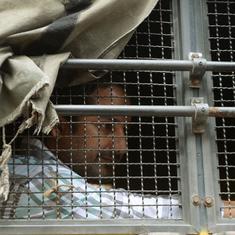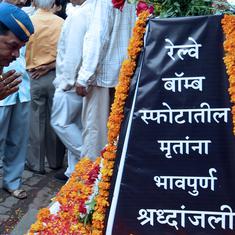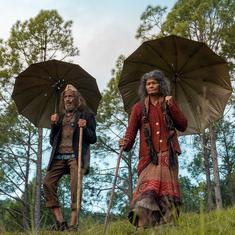December 15, 1917
Petrograd, Russia
9.30 am
The entire Roerich house was in chaos. How could it not be when the entire country had just been upended by the Bolshevik Revolution, a seismic episode that had torn through the very fabric of the Empire?
Nicholas sat in his rocking chair, still struggling to reconcile the defeat of the ruling elite at the hands of the working classes. Tall and gaunt, his striking blue eyes had sunk into his head from exhaustion; his wavy black hair turned white by the years of stress. He watched the chaos anxiously, encouraging everyone to hurry up at every opportunity.
Of an artistic bent, Nicholas had been encouraged to pursue his passions from an early age. Brought up in the privileged household of a high-ranking Tsarist government official, he had been able to pursue twin degrees, one in art from the Imperial Art Academy, and the other in law. He had no difficulty finding employment at the Imperial Society for the Encouragement of the Arts, where, across eleven years, he had combined his artistic talent with his love for archaeology to make his name as the nation’s greatest painter of its glorious past.
He had enjoyed all the privileges – his fame and money allowing him to travel the empire with his friends, his charm enabling new relationships, both romantic and professional – wherever he went. During this time, he had noticed the decline in the Russian Empire, his intellectual curiosity leading him to dive deeper to understand why the changes were taking place.
Over time, it became clear to him that the roots of unrest lay in the enormous strain exerted on existing societal structures by the emergence of factory life – the strain exacerbated by awful working conditions and desperately low wages, and stretched to breaking point due to the daily abuse of workers by the nobles who owned the factories.
As he had anticipated, strikes had broken out across Russia, bringing key industries to a halt. The Tsar, rather than addressing the root cause, compounded the problem by ruthlessly murdering hundreds of workers to quell this rebellion. The Tsar’s actions transformed Nicholas from an intellectual spectator into an active player in the transformation of the empire. Disenchanted with the Tsar and Tsarina, Nicholas had joined ranks with other members of the ruling elite who believed in a new economic model for the Empire, their group eventually forming a provisional government upon the abdication of the Tsar. Nicholas had played a vital role behind the scenes, leveraging his personal relationship with the Tsar and Tsarina to convince them to abdicate, promising their family’s safety in
exchange for the peaceful transfer of power.
But, soon after, the Bolshevik Party, under Lenin, emerged as the representative of the workers. Lenin, previously exiled by the Tsar, had returned to lead the Marxist revolution for the transfer of power to the workers. Nicholas’s ideology clashed with Lenin’s, the former believing in sharing power with the workers and the latter believing in putting power under the exclusive control of the workers. The men had clashed often, both in writing and in public debates, till the Bolshevik Revolution in 1917, in which the Bolsheviks had overthrown the provisional government and grabbed power.
Ruthlessly, the Bolsheviks had purged the new Socialist state of any opposition, with the dreaded secret police, the Cheka, arresting or making the leaders of the provisional government disappear. Recognising the danger early on, Nicholas had begun to make arrangements to flee the Socialist empire. But, he had been too late, having failed to liquidate all his assets before learning that he was next on the Cheka’s list.
It was thus that Nicholas’s family had ended up packing in panic for their departure, today. Despite his opposition to Lenin, Nicholas still had many friends, including several in the Bolshevik Party, with whose assistance they were now executing a desperate departure. His wife, Helena, and her staff were packing what they could carry in the horse carriage, leaving behind the rest to be nationalised. The Roerichs, along with their young sons, George and Svetoslav, would make their way to the port, where they would board a steamer departing for Great Britain, hiding in the ship’s cargo hold, away from the prying eyes of the Cheka.
The family would, after resting in London for a few days, leave for India – both Nicholas and Helena having inculcated a strong interest in spirituality, inspired by their reading of Vivekananda, Rabindranath Tagore and the Bhagavad Gita. They arrived in Bombay in the winter of 1917, enjoying the company of Nicholas’s friends for the next several months. In June, they travelled to Kappar, the ancient capital of the Kullu kingdom, for a spiritual retreat and fell in love with the beautiful town, deciding to make it their home. By they had purchased a house and moved to Kappar to start a new life.
While Helena watched the children, Nicholas explored India, his passion for archaeology taking him across the entire northern region, on a five-year expedition from Darjeeling to Kashmir. During this time, he produced dozens of paintings of the Himalayas that would eventually grace museums across
the world. Helena, meanwhile, involved herself deeply in spirituality and mysticism, setting up the Oriental School of Spiritual Learning in Kappar. The boys struggled to adjust in an alien land, but, as children always do, eventually settled into their new lives.
The Roerichs established themselves comfortably in India, unaware of the part they were going to play in a game of international intrigue, a century later.
August 15, 1975
Dhaka
6.30 am
The room was pitch-dark, the thick green curtains blocking out the light of the rising sun. The mole lay quietly on the bed, smoking yet another cigarette and waiting anxiously for the phone to ring to provide him with the confirmation that the job he had planned had been completed.
His guilt at betraying his country had faded over the years, rationalised by the good that his relationship with the CIA had done for India. The rabbit hole had been deeper than he had expected, but once he had taken his first few tentative steps in espionage, he had accepted the impossibility of extricating himself from the relationship without finding himself behind bars for life, or, possibly, ending up dead. Having failed to confess before the damage was too great, he was now too far in to reverse course; the Damocles sword of being exposed by the CIA constantly hanging over his head.
He had planned the operation personally, every detail meticulously considered in the context of his knowledge of Bangladesh. Having been posted to the country in 1970, he had played a key role in securing accurate information about the military in East Pakistan for New Delhi; information that had allowed India to plan the military operation that had led to the bloody secession from West Pakistan and the birth of an independent Bangladesh. His contribution had not gone unnoticed, and he had been invited to be part of the Indian delegation that had met with Sheikh Mir Iqbal upon his return to Bangladesh in December 1971, as the head of the newly formed government.
Over the last four years, he had risen to lead India’s intelligence services in Bangladesh, working closely with the Sheikh’s government and his paramilitary force to maintain internal order. He had done what was expected of him as a friend of Bangladesh, fighting hard against Pakistan’s Inter-Services Intelligence’s – the ISI’s – constant efforts to destabilise the government, keeping a close eye on dissension within the guerrilla resistance movement, Mukti Bahini, and battling the left-wing insurgency of the Gonobahini, the armed division formed by the student wing of the Bangladesh Awami League after it had split to form the Jatiyo Samajtantrik Dal, which had led to the assassination of several of the Sheikh’s highest-ranking bureaucrats.
As he protected the fledgling government, his reputation grew and he gained access to the government and nearly every important player in Bangladesh, making him one of the few people who knew everything that was happening. Beyond reproach and with unlimited access, it had been relatively easy for him to plan the operation for the CIA.
While he didn’t agree with their assessment of the consequences of the operation and had advised them against it, the Americans had decided to move ahead anyway, believing that the installation of a puppet government would allow them to do both – keep the Indian influence in the South East Asian region at bay while also positioning them as a true ally of Pakistan that had rid them of the man who had humiliated them in 1971.
Finally, his phone rang. “Good morning,” said the soft voice on the other end, the pre-agreed signal for the mission being a success. The world would know soon enough – Sheikh Mir Iqbal was dead, assassinated in his home by carefully selected officers of the Bangladesh Army.

Excerpted with permission from The Portrait of a Secret: A Novel Inspired by True Events, Tarun Mehrishi, Penguin.










